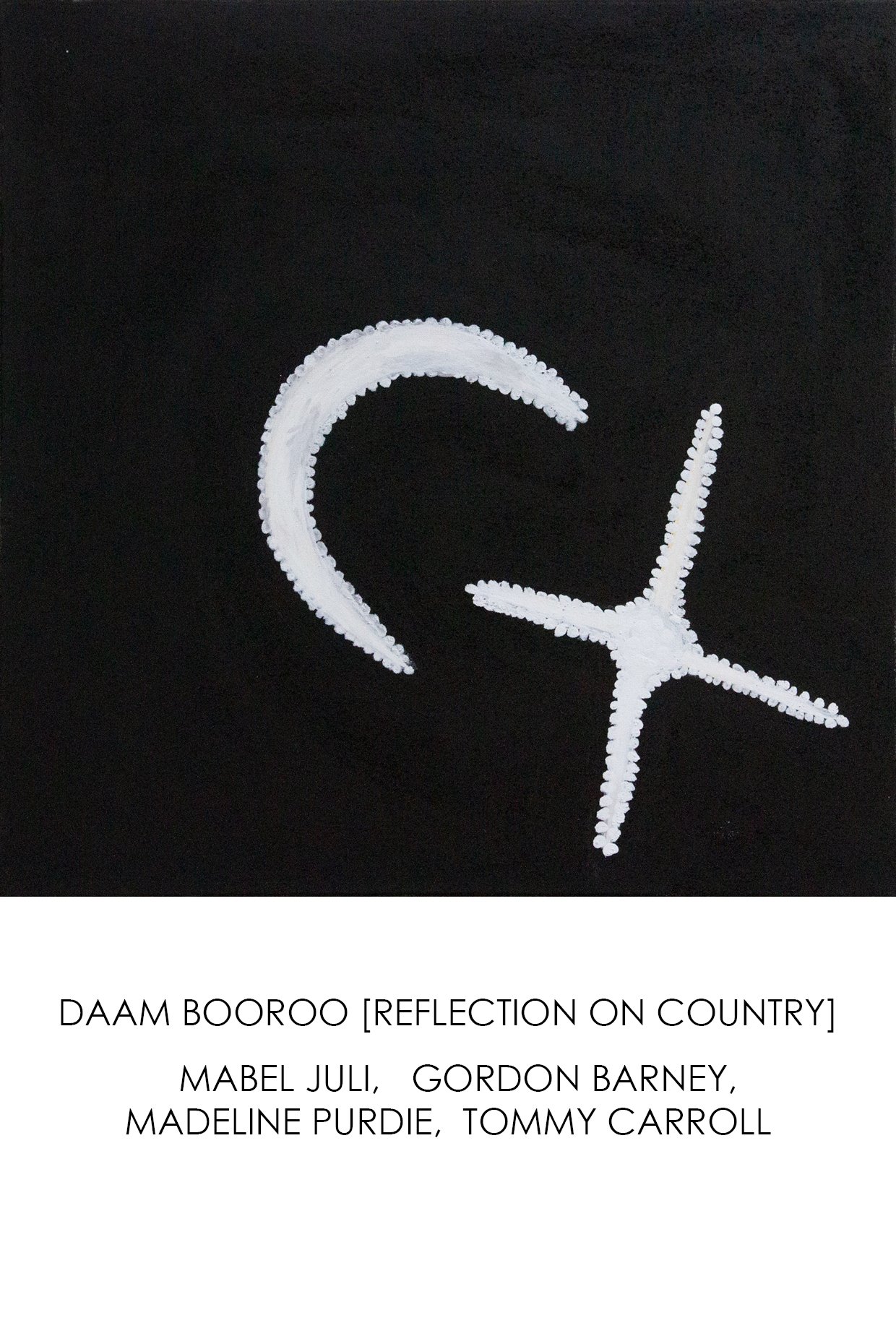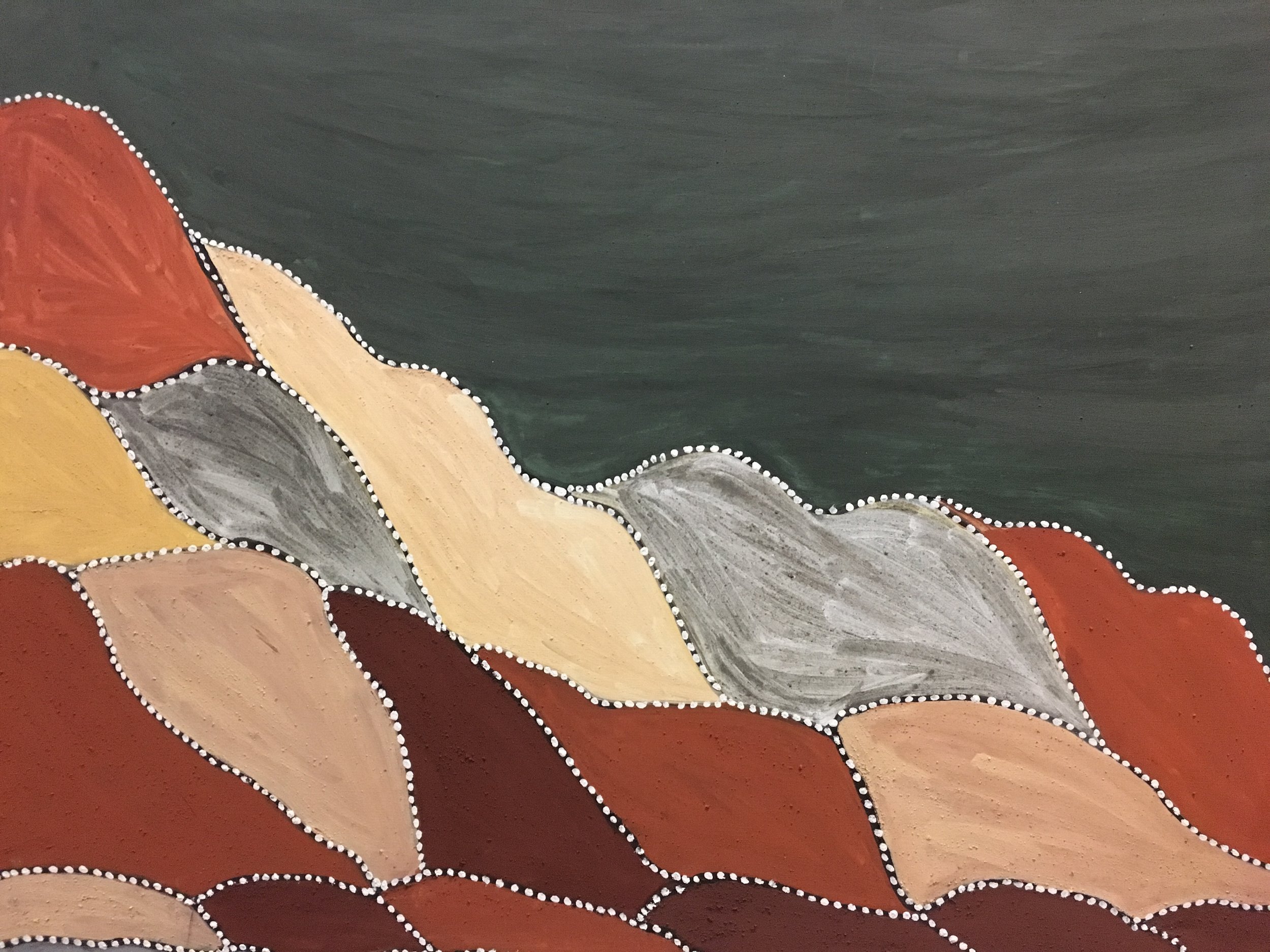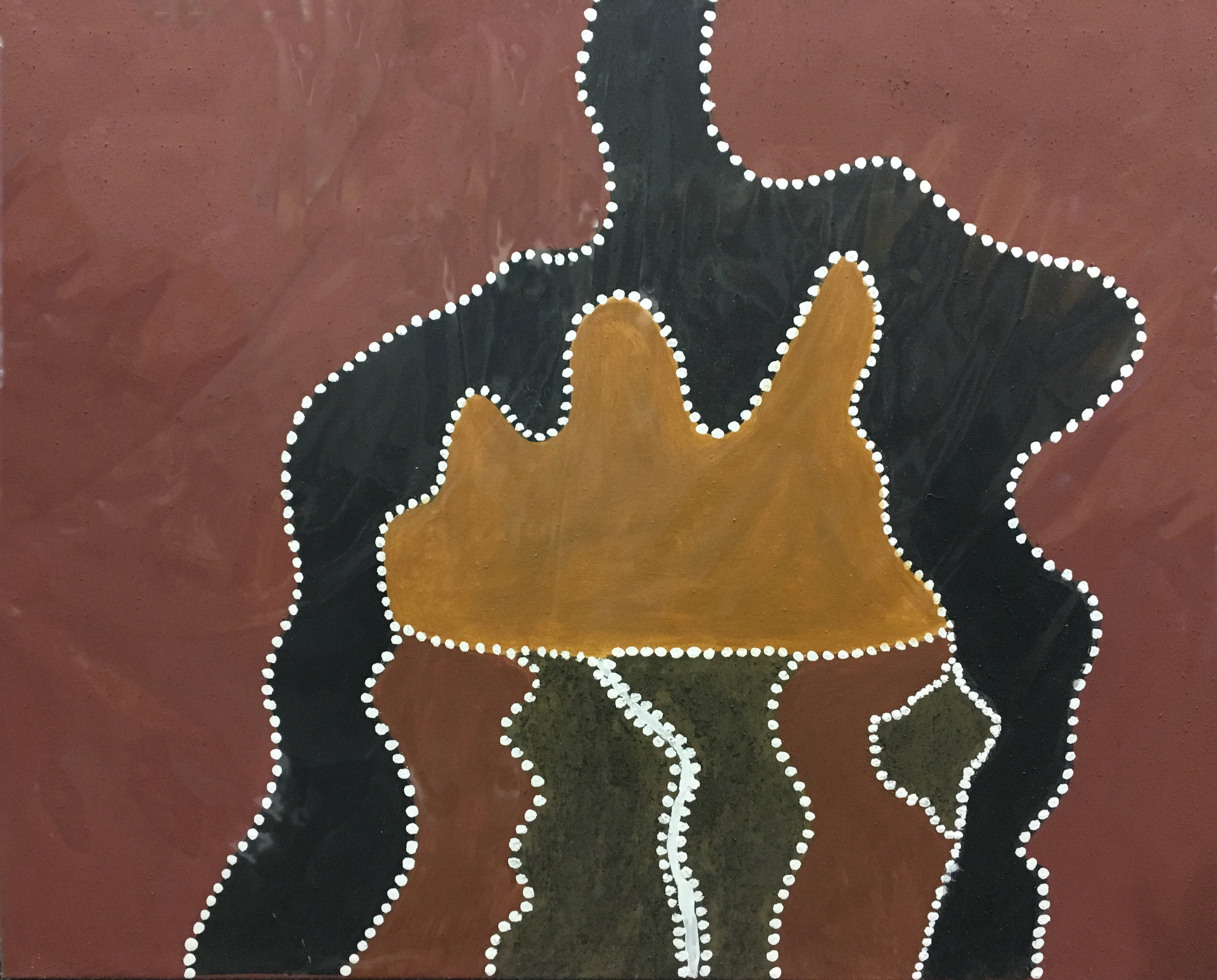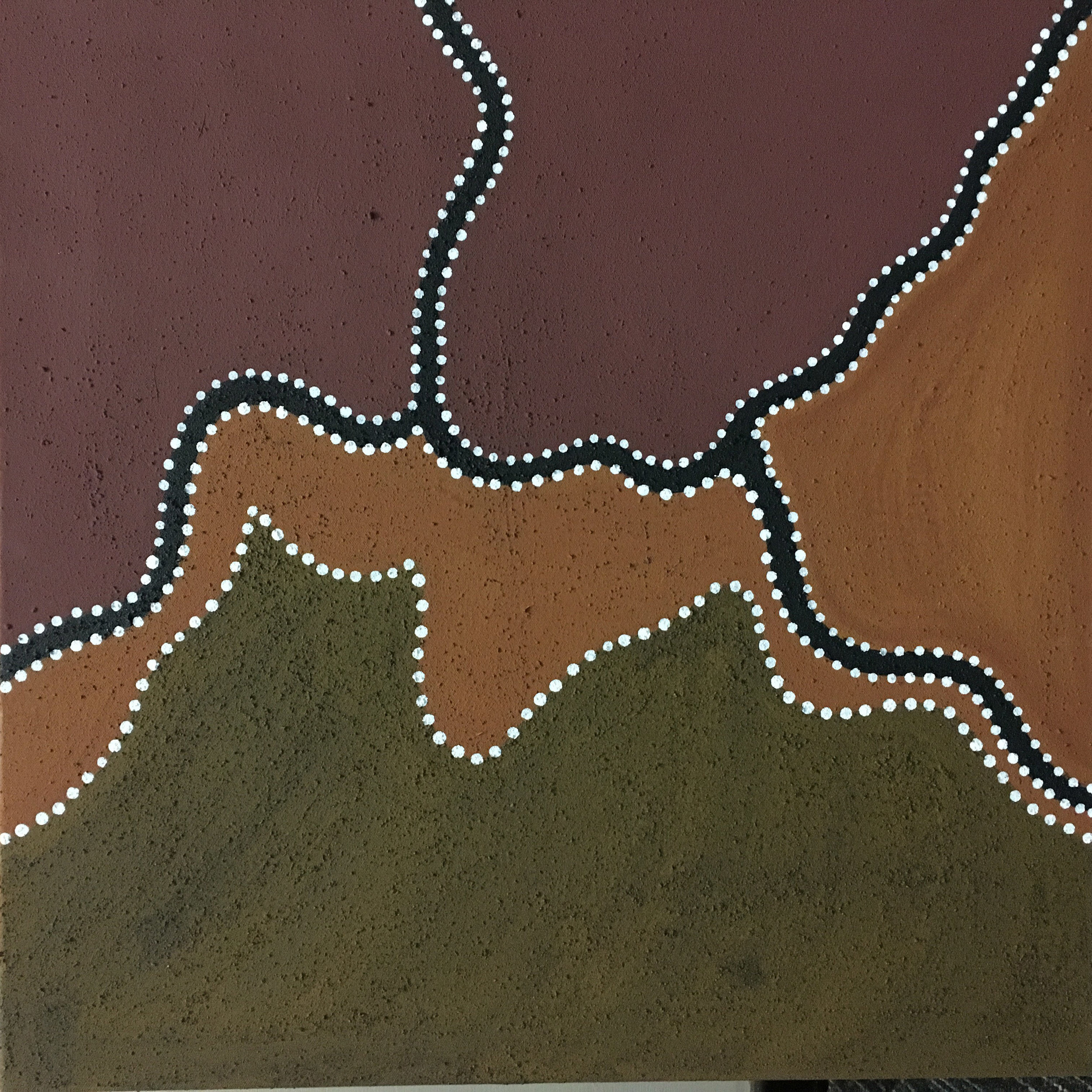WARMUN ARTISTS | DAAM BOOROO [REFLECTION ON COUNTRY]
15 JUNE - 17 JULY 2022
Congratulations to Shirley Purdie for having her work 'Goordbelayinji, acquired for the collection of the Australian War Memorial and for having her work featured in the exhibition 'So Fine' at the National Portrait Gallery.
Congratulations to Mabel Juli for having her work showcased on the sales of the Opera House for a year. Congratulations also to the Warmun Arts Centre. Images courtesy the artist and Warmun Arts Centre.
WARMUN AT TWENTY
7 MARCH - 8 APRIL 2018
The Nancy Sever Gallery is pleased to present Warmun at Twenty, an exhibition to mark the twentieth anniversary of the founding of the Warmun Arts Centre, a cultural institution of national significance that preserves and nurtures the art and culture of the Gija people.
The Warmun Arts Centre is located in Gija country approximately two hundred kilometres south of Kununurra in the Kimberley. It was established in 1998 by leading local artists, including Rover Thomas and Queenie McKenzie, in response to a collective community desire to have a location in which to celebrate and share Gija culture, language, art and custom. It currently represents some sixty established and emerging artists, each of whom brings a unique approach to Gija art.
This exhibition includes the work of Rusty Peters, Tommy Carroll, Phyllis Thomas, Patrick Mung Mung, Mabel Juli, Shirley Purdie, Gordon Barney, , Rammey Ramsey, Kathy Ramsey and Charlene Carrington. What connects the senior artists is an encyclopaedic knowledge of Gija Country, their skills as expert cross-cultural communicators and educators, and the desire to share their art with emerging artists in their community and with audiences beyond.
Gija art is known for its unique aesthetic and its distinctive graphic depictions of the landscape. Looking simultaneously across and down, artists create expansive representations of Country, imbued with ochres which tell of the land and the vast landscapes from which the work heralds.
Warmun artists are renowned for their use of natural ochre and pigments on canvas, which is integral to the contemporary expression of land and culture explored in traditional Ngarrankarni (Dreaming) stories, post-contact colonial histories and contemporary experiences.
Gija artists rank among the nation’s leading contemporary Indigenous art practitioners. Their work is exhibited and held in important international collections, as well as by all State galleries and major public and private collections.
Warmun at Twenty is on display from 7 March to 8 April at the NANCY SEVER | GALLERY, Cnr. Batman & Currong Sts. Braddon ACT 2612. Gallery hours: 11am - 5pm Wednesday to Sunday. For further information please contact Nancy Sever on 0416 249 102. or nancysevergallery.com.au
Artworks included in the exhibition:
(for details of the works, please click and hold cursor over the image)


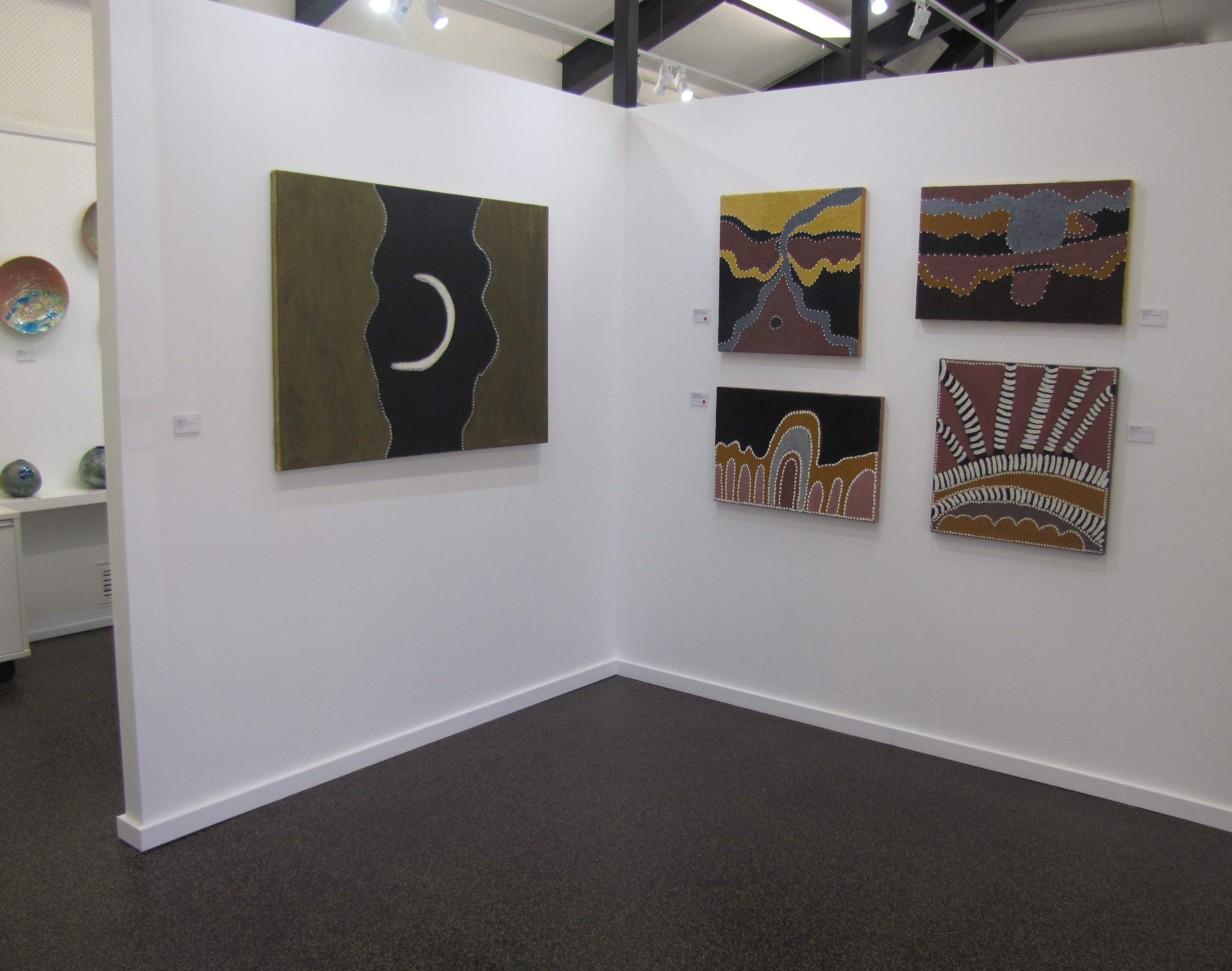
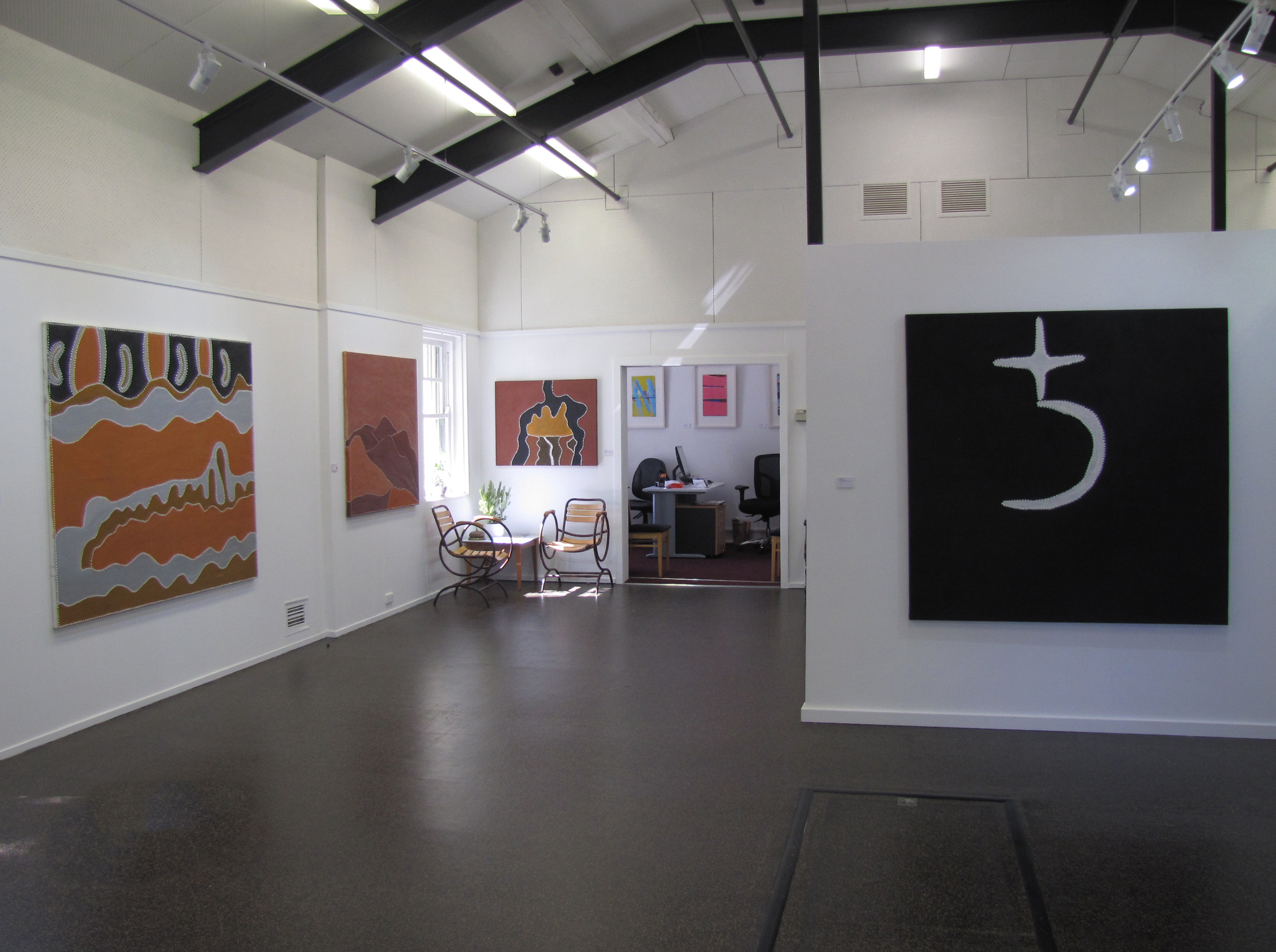

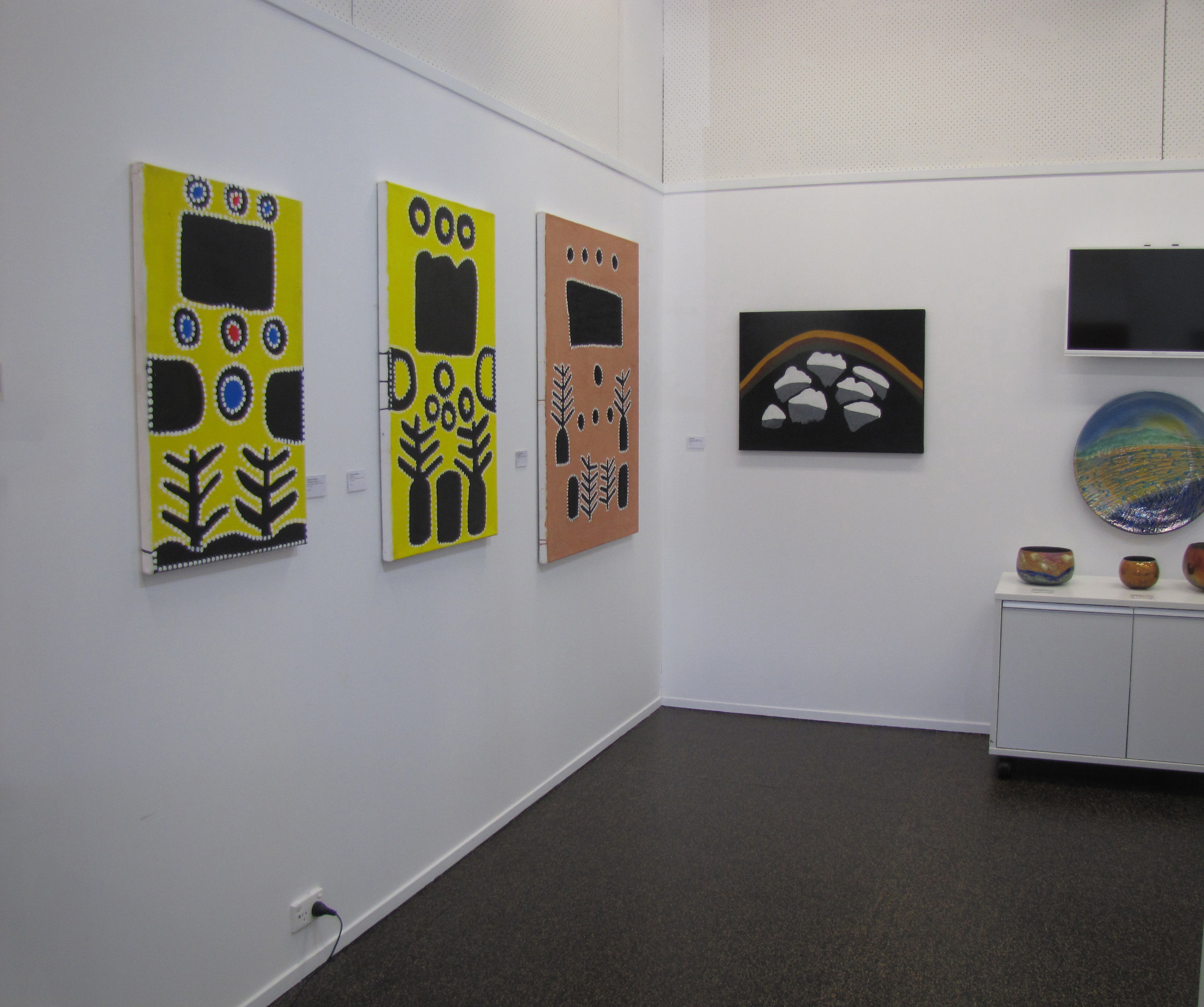
About the artists
Gordon Barney was born at Birrno (Alice Downs Station) in the East Kimberley in 1944 and now lives at Norton Bore Community, via Turkey Creek. His wife, the well known senior Warmun artist, Shirley Purdie, encouraged him to take up painting in 1998 when the Warmun Art Centre commenced operation. He is well known in the Warmun community as a strong law and culture man and an important ceremonial dancer. He is a skilled horse breaker and rodeo rider and he still works as a stockman. He favours painting with natural ochres and he carries a saddlebag on his rides in which he collects the different ochres he encounters. The subject matter of his paintings is quite varied. His depicts the hills and rugged country of the cattle stations where he worked for many years. He also paints the Magoombarrany, Boorlnginy, Yarangga (Katie’s Yard), Laboony and Joorroomi country, and interprets the landforms and the ngarrangkarni (Dreaming) stories of Birrno. His style is characterised by his use of line and empty space.
For further information on Gordon Barney
Charlene Carrington was born in Perth but has lived most of her life in Warmun. She comes from a family of artists. Her parents are established artists Churchill Cann and Sadie Carrington. Her grandmother, Betty Carrington, is an established artist and the partner of renowned Warmun painter Patrick Mung Mung. When she was young Charlene sat with the old artists, watching them paint and learning the traditional methods. She uses natural binders and natural pigments such as crushed leaf extracts collected from local eucalypts to bind the ochres to canvas and board. This is the method used by Rover Thomas and Jack Britten before acrylic binders became available.
Tommy Carroll was born on Doon Doon Station, 100 kilometres north of the Warmun Community in 1955. After working for many years as a stockman on various cattle stations he took up painting in late 1999. He has a strong, individual style and his work is often dark and brooding, with a heavy use of black charcoal and natural red ochres. Other works, by contrast, are alive with bright yellows and vibrant reds. They depicts the stories of the Doon Doon Station country and the Ngarranggarni dreamings.
For further information on Tommy Carroll
Mabel Juli was born about 1933 near Moola Boola Station south of Warmun in Western Australia. As a young woman she moved to Springvale Station. Her brother is Rusty Peters is also an accomplished artist working at Jirrawun Arts in Wyndham. Rover Thomas encouraged her to paint and Queenie McKenzie taught her in the mid-1980s. Using earth pigments or acrylic on canvas she mostly paints the Dreaming stories of her Darrajayin country. The stories that Julie’s parents taught her when they took her to their ancestral lands – Karnkiny, Glingennayn, Marranji and Jiyirinny – also feature in her work. Mabel is a law and culture elder to her people and an important ceremonial singer and dancer.
Patrick Mung Mung was born at Yunurrel (Spring Creek) in 1944 and, like a number of Indigenous artists from the area, he worked as a stockman for many years on stations in the East Kimberley. He started painting in 1991 and was instrumental in establishing the artist and community owned art centre at Warmun in 1998. He is now a senior artist at Warmun Art Centre and an elder law and culture man in the Warmun community. His knowledge of his country and his cultural memory of family are powerful influences on his art. Painting on canvas with a palette of soft and hard natural pigments that he extracts locally, he depicts the country of his birthplace (Yunurrel), his father’s country (Jarlarlu), Ngarranggarni (Dreaming) stories from Texas Downs Station country, and aerial maps of Ngarrgoorroon country, which is characterised by hilly terrain and waterholes. Patrick often presents his narratives as landscapes in colour blocks of varying size that are sewn together by white dotted lines that simultaneously join and separate the composition, as well as providing movement across the canvas.
For further information on Patrick Mung Mung
Rusty Peters is a senior Gija artist who was born on Springvale Station south west of Turkey Creek around 1936. Like many Kimberley artists he spent his formative years working as a stockman, boundary rider and horse breaker on various stations. After his father’s death the family relocated to Mabel Downs and later moved to Turkey Creek and then in 1989 to Kununurra, where Rusty worked at the Waringarri Aboriginal Art Centre, assisting artists, notably Rover Thomas, with whom he was to develop a life long friendship, and participating in printmaking workshops. A senior elder, incredibly learned in traditional law and customs, he started painting seriously in 1997 when he joined Jirrawun Arts, the centre established by Freddie Timms, and he soon emerged as one of its leading practitioners. His intimate knowledge of the Kimberley country, gained while working in widely scattered locations, of the Ngarranggarni of Darrajayin Country, gained from his grandfather, and of the Dreamtime stories associated with these places were to form the basis of a very philosophical artistic practice, executed in a sparse mapping style and a tightly controlled narrative in traditional red and yellow ochres and black charcoal. In his recent works, including three paintings in this exhibition, the artist has included non-traditional, representative elements such as a row of trees on the horizon, stockyards and a star studded night sky. This allows the viewer to consider the subject matter from two viewpoints, the pictorial with the abstract. Rusty has also participated in the Gija language maintenance program.
For further information on Rusty Peters
Shirley Purdie was born in 1948 at Mabel Downs Station, in Western Australia's Kimberley region and moved to Warmun, where she now lives and paints. She is married to artist Gordon Barney. Shirley was taught to paint by her mother and by the major Kimberley indigenous artist Queenie McKenzie. She has won several awards, including the Blake Prize for Religious Art in 2007. Her works are held by major galleries, including the National Gallery of Australia.
Kathy Ramsay is the daughter of artists Rammey and Mona Ramsay, and the granddaughter of the late Timmy Timms. Of her work she says, "I only started painting in 2013. I like to join in and to be sharing a part of my Country. My mother and my grandfather always told us what this place means, what the names are, and all those Ngarranggarni (Dreaming) stories. Now, with all this painting, I'll be the one to tell them to my kids. I just paint what my old people told me about our Country – because they are the ones who know the history of our Country, the Country we’re still connected to today. Our Country really knows us, and it owns us’. Kathy paints her ancestral Country around Bow River, incorporating rich Ngarranggarni stories with recent histories of station life.
Rammey Ramsey is a senior Gija man who was born on Old Greenvale Station which is now part of Bow River Station. His own country and that of his parents is a part of Gija country in an area near Elgee Cliffs to the west of Bedford Downs. His Gija name, Warlawoon is the general name for the whole of that area of country. Rammey Ramsey lived in Warlawoon country, walking in the bush with his family when very young then moving to Bedford Downs and working there as a young man. He spent some time working at Landsdowne Station. He then moved to Bow River Station and has lived there ever since. Rammey began painting for Jirrawun Arts in 2000. He is true to his tribal law, painting only country to which he has rights through birth and family. Most of his paintings are of the gorge country north west of Halls Creek in an area surrounding Elgee Cliffs. He depicts the places where the rock wallaby live and camping areas near waterholes, distillations of important features of the landscape. A line might be a road or a river, a circle a waterhole, a cave or hills. His paintings are wonderfully atmospheric works. conveying a range of different natural experiences.
Phyllis Thomas is a Gija artist who was born at Riyarr on the Turner River, south east of Purnululu. When she was young, she worked on Turner Station, gardening, drawing water from the well and looking after the poultry, though she preferred to slip away occasionally into the bush with the old women, hunting and gathering. She worked on a number of cattle stations in the region before moving to Warmun where she became a Gija language and cultural teacher in the local school and art centre. Phyllis began to paint in 1998 when Freddie Timms set up the Jirrawun Aboriginal Arts group and her work achieved almost immediate success when she was represented in the National Aboriginal and Torres Strait Islander Art Awards (NATSIAA) the following year. She paints the country along the Ord and Turner rivers as well as depicting Dreaming places and bush tucker from the Roogoon (Crocodile Hole) area. A characteristic element in many of her paintings are the boab trees that grow at Crocodile Hole. She is represented in the Parliament House Collection in Canberra, the Art Gallery of Western Australia and in private and corporate collections throughout Australia and overseas.

